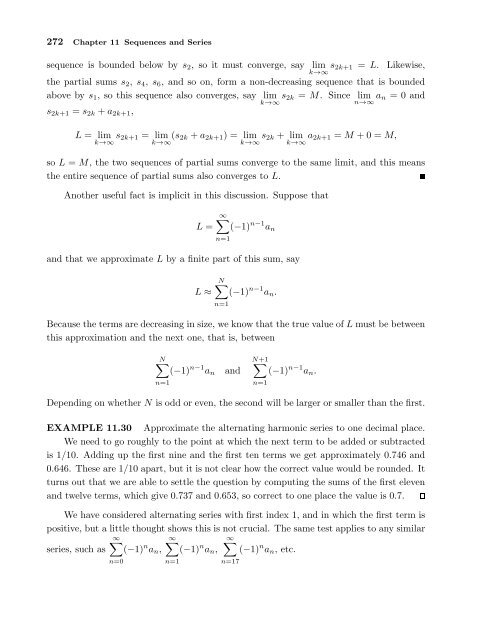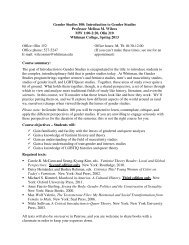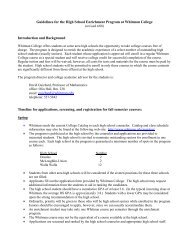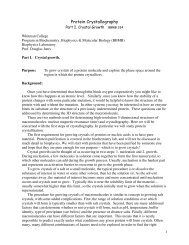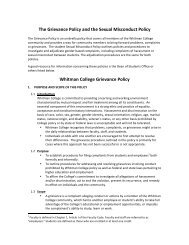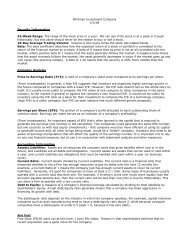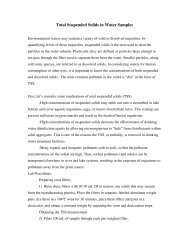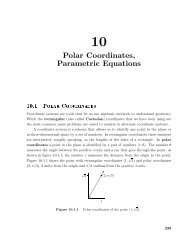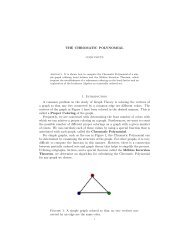Sequences and Series
Sequences and Series
Sequences and Series
Create successful ePaper yourself
Turn your PDF publications into a flip-book with our unique Google optimized e-Paper software.
272 Chapter 11 <strong>Sequences</strong> <strong>and</strong> <strong>Series</strong>sequence is bounded below by s 2 , so it must converge, say lim s 2k+1 = L. Likewise,k→∞the partial sums s 2 , s 4 , s 6 , <strong>and</strong> so on, form a non-decreasing sequence that is boundedabove by s 1 , so this sequence also converges, say lim s 2k = M. Since lim a n = 0 <strong>and</strong>k→∞ n→∞s 2k+1 = s 2k +a 2k+1 ,L = limk→∞ s 2k+1 = limk→∞ (s 2k +a 2k+1 ) = limk→∞ s 2k + limk→∞ a 2k+1 = M +0 = M,so L = M, the two sequences of partial sums converge to the same limit, <strong>and</strong> this meansthe entire sequence of partial sums also converges to L.Another useful fact is implicit in this discussion. Suppose thatL =∞∑(−1) n−1 a nn=1<strong>and</strong> that we approximate L by a finite part of this sum, sayL ≈N∑(−1) n−1 a n .n=1Because the terms are decreasing in size, we know that the true value of L must be betweenthis approximation <strong>and</strong> the next one, that is, betweenN∑(−1) n−1 a nn=1<strong>and</strong>N+1∑(−1) n−1 a n .n=1Depending on whether N is odd or even, the second will be larger or smaller than the first.EXAMPLE 11.30 Approximate the alternating harmonic series to one decimal place.We need to go roughly to the point at which the next term to be added or subtractedis 1/10. Adding up the first nine <strong>and</strong> the first ten terms we get approximately 0.746 <strong>and</strong>0.646. These are 1/10 apart, but it is not clear how the correct value would be rounded. Itturns out that we are able to settle the question by computing the sums of the first eleven<strong>and</strong> twelve terms, which give 0.737 <strong>and</strong> 0.653, so correct to one place the value is 0.7.We have considered alternating series with first index 1, <strong>and</strong> in which the first term ispositive, but a little thought shows this is not crucial. The same test applies to any similar∞∑ ∞∑ ∞∑series, such as (−1) n a n , (−1) n a n , (−1) n a n , etc.n=0n=1n=17


